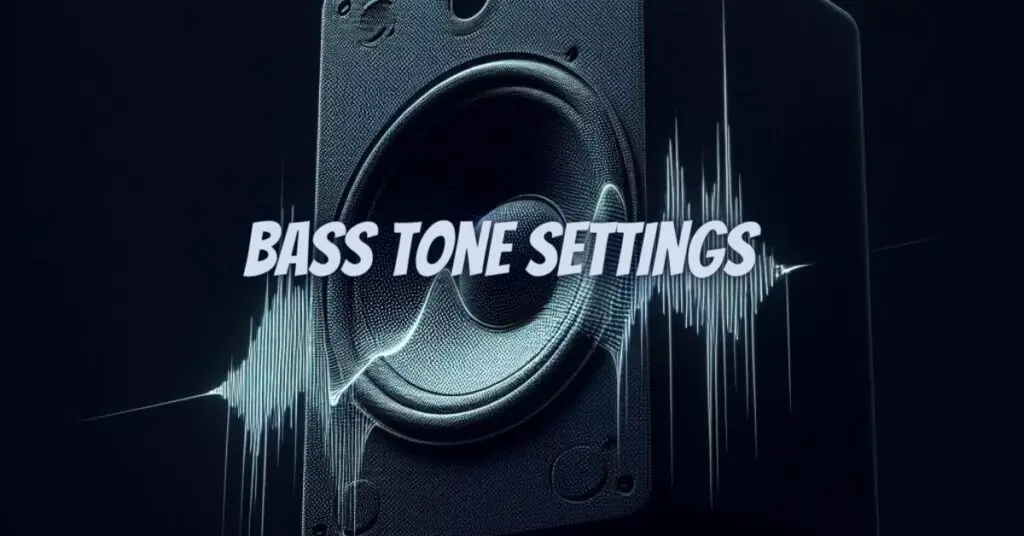Creating the perfect bass tone is a fundamental aspect of music production and performance. Whether you’re a bass player, producer, or sound engineer, understanding bass tone settings and techniques is essential for achieving the desired sound in various musical contexts. In this article, we’ll delve into the world of bass tone settings, covering key elements, gear, and techniques to help you craft a tone that’s just right for your music.
1. Bass Guitar Selection
The journey to a great bass tone begins with selecting the right instrument. Different bass guitars offer various tonal characteristics. Choose a bass that suits your musical style and preferences, considering factors like the type of wood, pickup configuration, and scale length.
2. Amplification and Equalization
Your choice of bass amplifier and its settings significantly influence your tone. Here are some essential aspects to consider:
- EQ Settings: Adjusting the bass, midrange, and treble controls on your amp can shape your tone. Experiment with these settings to find the balance that suits your music. Boosting the bass can add depth, emphasizing mids can provide punch, and enhancing treble can add clarity.
- Gain and Distortion: Depending on your musical genre, you might want to add a touch of gain or distortion to your bass tone for added warmth or grit. Use this effect sparingly to avoid muddiness.
3. Bass Effects Pedals
Effects pedals can enhance and shape your bass tone in various ways. Common bass pedals include:
- Compression: Compression pedals even out the dynamic range of your bass, providing sustain and consistency. They can make your tone sound more polished and controlled.
- Equalizer (EQ): Graphic or parametric EQ pedals allow precise control over specific frequency ranges. They’re handy for fine-tuning your bass tone.
- Overdrive and Distortion: These pedals add grit and saturation to your tone, suitable for rock, punk, or genres requiring a more aggressive sound.
- Chorus and Modulation: These pedals can add depth and movement to your tone, creating a more spacious and atmospheric sound.
- Octave: Octave pedals generate sub-octave frequencies, providing a thicker and deeper bass sound.
4. Playing Technique
Your playing technique plays a crucial role in shaping your bass tone:
- Fingerstyle: Playing with your fingers creates a warm, rounded tone with a smooth attack.
- Pick Playing: Using a pick produces a more percussive and articulate sound, ideal for rock and punk genres.
- Slap Bass: Slap bass techniques create a sharp and percussive tone, popular in funk and pop music.
5. Pickup Position
Adjusting the position of your bass’s pickups can alter your tone. Placing them closer to the neck produces a warmer, rounder sound, while moving them closer to the bridge results in a brighter, more focused tone.
6. String Selection and Age
The type and age of your bass strings affect your tone. Fresh strings generally provide a brighter, clearer sound, while older strings may sound warmer but lack clarity. Experiment with different string materials and gauges to find your ideal tone.
7. Room Acoustics
When performing live, the acoustics of the venue or room can significantly impact your bass tone. Be aware of how room reflections and resonance affect your sound and make adjustments as necessary.
8. Recording Techniques
In the studio, microphone placement, and recording techniques can shape your bass tone. Experiment with different miking positions and microphone types to capture the desired sound.
Crafting the perfect bass tone involves a combination of instrument choice, amplifier settings, effects, playing technique, and careful attention to detail. The right tone is highly subjective and depends on the musical context. Whether you seek a warm, rounded sound for jazz, a punchy and percussive tone for rock, or a deep, resonant bass for funk, understanding bass tone settings and techniques is essential for achieving your desired sonic signature. Experimentation and an ear for detail are key to finding your ideal bass tone.


